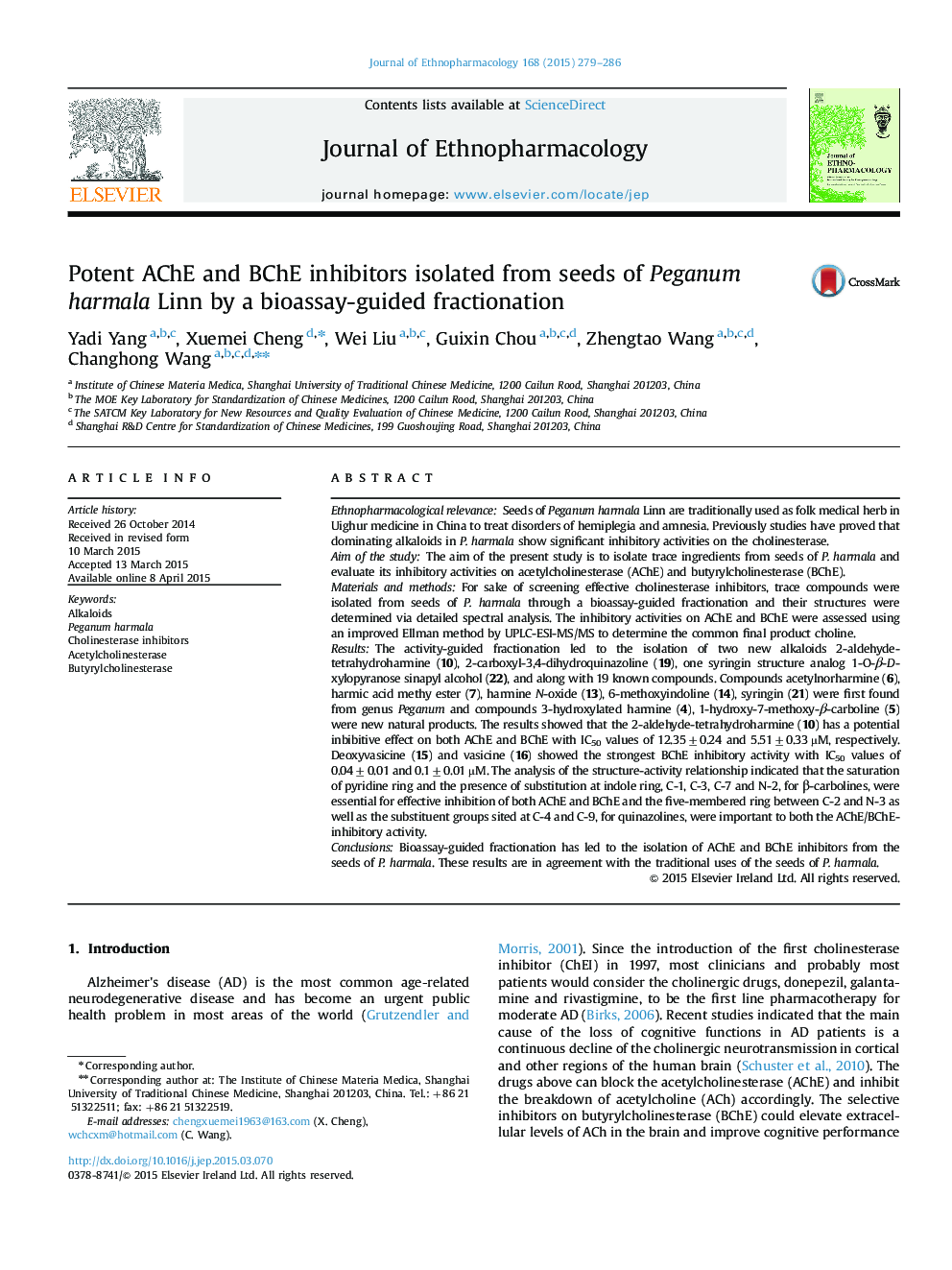| Article ID | Journal | Published Year | Pages | File Type |
|---|---|---|---|---|
| 5835634 | Journal of Ethnopharmacology | 2015 | 8 Pages |
Ethnopharmacological relevanceSeeds of Peganum harmala Linn are traditionally used as folk medical herb in Uighur medicine in China to treat disorders of hemiplegia and amnesia. Previously studies have proved that dominating alkaloids in P. harmala show significant inhibitory activities on the cholinesterase.Aim of the studyThe aim of the present study is to isolate trace ingredients from seeds of P. harmala and evaluate its inhibitory activities on acetylcholinesterase (AChE) and butyrylcholinesterase (BChE).Materials and methodsFor sake of screening effective cholinesterase inhibitors, trace compounds were isolated from seeds of P. harmala through a bioassay-guided fractionation and their structures were determined via detailed spectral analysis. The inhibitory activities on AChE and BChE were assessed using an improved Ellman method by UPLC-ESI-MS/MS to determine the common final product choline.ResultsThe activity-guided fractionation led to the isolation of two new alkaloids 2-aldehyde-tetrahydroharmine (10), 2-carboxyl-3,4-dihydroquinazoline (19), one syringin structure analog 1-O-β-D-xylopyranose sinapyl alcohol (22), and along with 19 known compounds. Compounds acetylnorharmine (6), harmic acid methy ester (7), harmine N-oxide (13), 6-methoxyindoline (14), syringin (21) were first found from genus Peganum and compounds 3-hydroxylated harmine (4), 1-hydroxy-7-methoxy-β-carboline (5) were new natural products. The results showed that the 2-aldehyde-tetrahydroharmine (10) has a potential inbibitive effect on both AChE and BChE with IC50 values of 12.35±0.24 and 5.51±0.33 µM, respectively. Deoxyvasicine (15) and vasicine (16) showed the strongest BChE inhibitory activity with IC50 values of 0.04±0.01 and 0.1±0.01 µM. The analysis of the structure-activity relationship indicated that the saturation of pyridine ring and the presence of substitution at indole ring, C-1, C-3, C-7 and N-2, for β-carbolines, were essential for effective inhibition of both AChE and BChE and the five-membered ring between C-2 and N-3 as well as the substituent groups sited at C-4 and C-9, for quinazolines, were important to both the AChE/BChE-inhibitory activity.ConclusionsBioassay-guided fractionation has led to the isolation of AChE and BChE inhibitors from the seeds of P. harmala. These results are in agreement with the traditional uses of the seeds of P. harmala.
Graphical abstractDownload high-res image (169KB)Download full-size image
